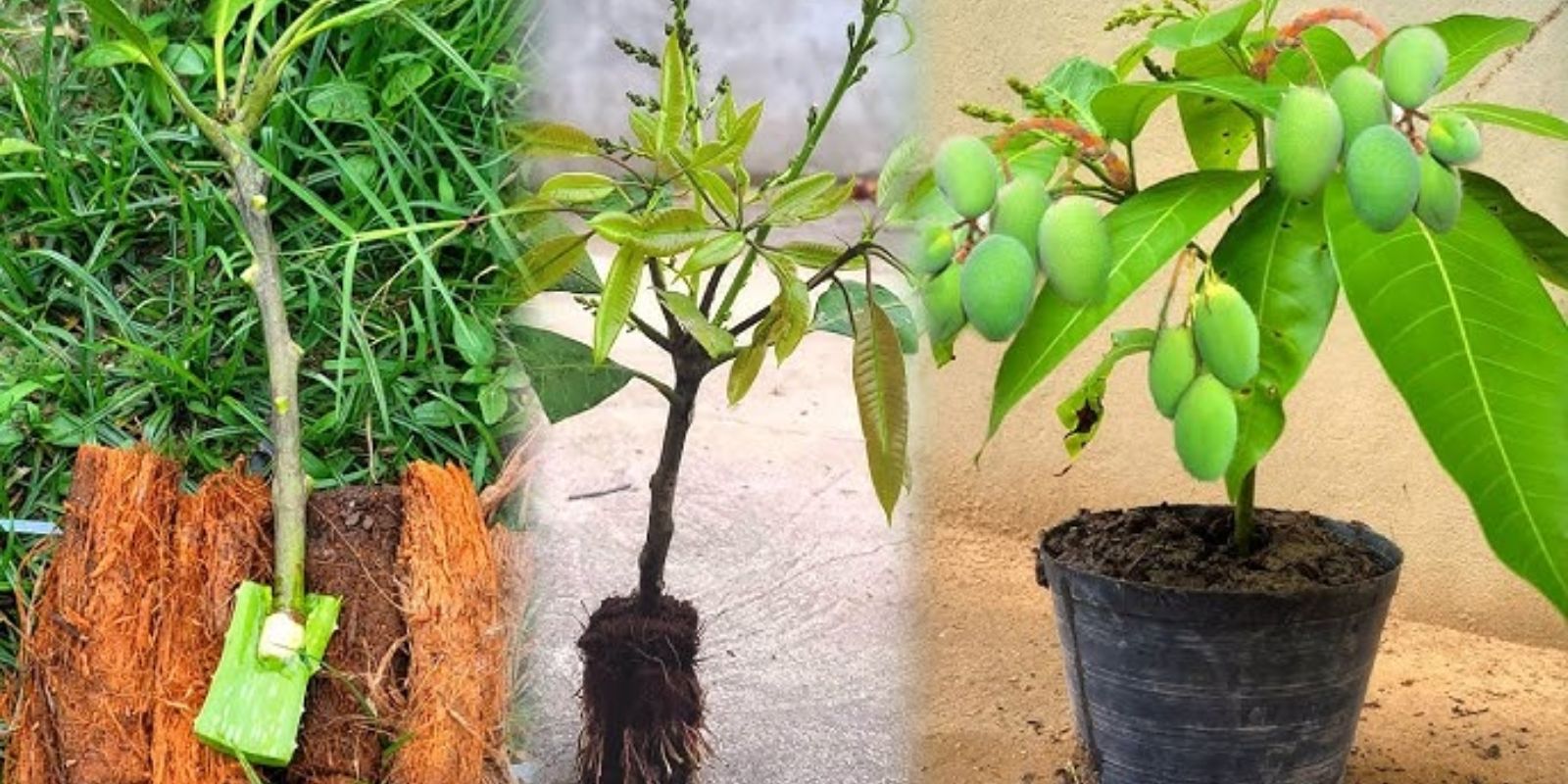Introduction
Mangoes are among the most beloved tropical fruits, and growing a mango tree at home is a dream for many gardening enthusiasts. While mango trees are typically grown from seeds or grafting, another innovative and sustainable method involves using coconut husk to root mango cuttings. This natural approach enhances moisture retention, supports root development, and provides essential nutrients to encourage a healthy and strong mango tree.
In this article, we will explore the step-by-step process of growing mango trees from cuttings using coconut husk, along with expert tips for ensuring success.
Why Use Coconut Husk for Propagation?
Coconut husk is an excellent natural medium for rooting mango cuttings due to several benefits:
- Excellent Moisture Retention: Helps keep the cuttings hydrated, preventing drying out.
- Aeration and Drainage: Promotes healthy root development by allowing airflow and preventing rot.
- Nutrient-Rich: Contains beneficial organic compounds that support root growth.
- Eco-Friendly and Sustainable: Utilizes natural materials, reducing waste and avoiding synthetic rooting mediums.
Now, let’s dive into the detailed process of propagating mango trees using coconut husk!
Step-by-Step Guide to Growing Mango from Cuttings Using Coconut Husk
1. Selecting the Right Mango Cutting
To ensure successful propagation, it’s crucial to choose the right cutting:
- Select a healthy semi-hardwood branch from a mature mango tree.
- The cutting should be 6-8 inches long with at least 3-5 leaves.
- Avoid using flowering branches, as they focus energy on fruiting rather than root growth.
2. Preparing the Coconut Husk
Coconut husk serves as the ideal medium for rooting. Follow these steps to prepare it:
- Choose a fresh or dry coconut husk. If dry, soak it in water for 12-24 hours to soften it.
- Cut the husk into manageable pieces that can hold the cutting securely.
- Squeeze out excess water so that it remains moist but not dripping wet.
3. Treating the Mango Cutting
To boost the chances of successful rooting:
- Trim the base of the cutting at a 45-degree angle to increase surface area for root development.
- Remove excess leaves, leaving only 1-2 small leaves to reduce moisture loss.
- Dip the cut end in a natural rooting hormone (such as aloe vera gel or honey) to promote faster root formation.
4. Placing the Cutting in Coconut Husk
Now that the cutting and husk are ready, it’s time to plant:
- Make a small hole in the coconut husk and insert the cutting about 2 inches deep.
- Ensure that the cutting is firmly secured, with good contact between the base and husk.
- Wrap the husk slightly around the cutting to maintain moisture.
5. Providing the Right Environment
For successful propagation, the cutting needs the right conditions:
- Place the cutting in a warm, shaded area with indirect sunlight.
- Maintain a humidity level of around 60-80% to prevent drying out.
- Avoid direct sunlight, which can cause stress and dehydration.
6. Watering and Maintenance
Consistent moisture is key for root development:
- Mist the cutting lightly every day to keep the husk damp but not waterlogged.
- If using a plastic bag or humidity dome, ventilate it daily to prevent mold growth.
- Check for signs of rot or fungal infections and remove any affected parts immediately.
7. Root Development and Transplanting
Within 3-6 weeks, roots should begin to emerge. To check:
- Gently tug the cutting—if there is resistance, roots have formed.
- Once roots are at least 2 inches long, the cutting is ready for transplanting.
8. Transplanting to Soil
When the cutting is well-rooted, move it to a pot or garden bed:
- Choose well-draining soil, such as a mix of garden soil, sand, and compost.
- Dig a small hole and place the cutting, ensuring the roots are covered.
- Water thoroughly and provide partial shade for the first few weeks.
9. Caring for the Young Mango Tree
After transplanting, continued care is essential for strong growth:
- Water regularly, especially during dry spells, but avoid overwatering.
- Provide organic fertilizers like compost, banana peels, or fish emulsion for balanced nutrition.
- Prune lightly to encourage a strong branching structure.
- Protect from pests such as aphids and mealybugs by using neem oil or natural insect repellents.
10. Long-Term Growth and Fruiting
A mango tree grown from cuttings may take 2-4 years to start bearing fruit, depending on the variety and growing conditions. To maximize fruit production:
- Ensure proper sunlight exposure (6-8 hours per day).
- Use balanced fertilizers rich in potassium and phosphorus.
- Monitor for diseases like anthracnose and treat early to prevent damage.
Common Challenges and Solutions
🔹 Cutting Not Rooting?
- Ensure proper humidity and moisture levels.
- Use a natural rooting hormone for better results.
- Avoid excessive watering, which can lead to rot.
🔹 Leaves Wilting or Dropping?
- Keep the cutting in a humid environment.
- Reduce leaf count to prevent excessive moisture loss.
- Mist regularly to maintain hydration.
🔹 Fungal or Mold Growth?
- Improve air circulation around the cutting.
- Use a diluted hydrogen peroxide solution to kill mold.
- Keep coconut husk moist but not soggy.
Final Thoughts
Growing mango trees from cuttings using coconut husk is a natural, cost-effective, and sustainable propagation method. By following these step-by-step techniques, you can successfully root mango cuttings and cultivate a thriving tree in your garden.
💬 Have you tried growing mango trees from cuttings? Share your experience in the comments below! Let’s grow together! 🌱🥭👇
#MangoTree #GardeningHacks #SustainableGardening #GrowYourOwn #FruitTrees #EcoFriendlyGardening #HomeGarden #PlantPropagation

